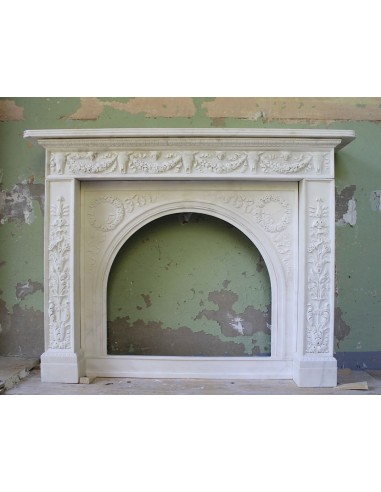I confess to you that I am very conflicted, indeed, even confused, at the time of beginning this commentary because there are too many topics that his sculptures would like to address, and all of them important.
I have been searching for days for a, shall we say, “unified” illumination, which probably does not exist.
After much happy suffering (happy because for an amateur to own such a work is like touching the sky with a finger, suffering because I would like to understand everything about what these sculptural figures certainly intend to communicate, but the ideal connection between them, assuming it exists, eludes me. The fact is that I “feel” that this trait-d'union” must exist, indeed).
At this point, since I cannot continue to torture myself with doubts and uncertainties, I have decided to abandon the search for the philosopher's stone and examine one by one the messages that these sculptural representations express. This is to give knowledge to you at least of what is certain, but also because I do not exclude that, studying portion by portion this fantastic and statuesque “picture,” the electrocution I have been searching for for days will not come of itself.
Let us start with the most important depiction in this work, the “BUCRANIUM,” that is, the skull of the ox that, interspersed with the face of the Greek god Hermes (or, if you prefer, the Roman god Mercury) decorates the entire pediment of the fireplace.
There are sculptures of bucrani since 4000 B.C. in Mesopotamia, since 2000 B.C. in Egypt, then, a great many, in Rome, including in such important monuments as the Colosseum, the tomb of Cecilia Metella or in the temple of Vesta, just to name a few.
In the world of ancient Rome, the bull was the sacrificial animal par excellence, especially in the spring, when it was killed and its blood scattered in the fields. Where the bull's blood was sprinkled the grass grew greener and taller and this too was seen as a reason for sacredness. It was usually sacrificed to the god Mars who was yes the god of war but also the god of thunder, rain and fertility.
The bull (and thus the skull symbolizing it) signifies regeneration: Its seed laid in the earth is destroyed but regenerated.
Both because of this hope of regeneration and as a sacrificial animal, Christianity took it to symbolize Christ, who immolated himself on the cross.
It is amazing the amount of finds of depictions of bucrania in all parts of the known world, in the vast majority combined with decorative floral festoons, as in the case of our fireplace.
AND THE REASON FOR THIS ENORMOUS SPREAD (AT LEAST THIS MUCH IS CLEAR AND CERTAIN) IS ALWAYS THE SAME: THE OX (PERSONIFIED BY ITS SKULL) IS AN AUSPICIOUS SYMBOL OF REBIRTH, REGENERATION, RESURRECTION.
AND SO, PLEASINGLY, THAT CEMETERY REPRESENTATION OF THE OX SKULL NOW APPEARS TO US AS A KIND OF GOOD LUCK CHARM AND AS SUCH, CHARGED WITH SYMPATHY.
WILL THIS “AMULET” BE THE ONE TO MAKE US LIVE 120 YEARS (THUS EMULATING BERLUSCONI) OR, BETTER YET, TO MAKE US REGENERATE, REVIVE, RESURRECT INDEFINITELY?!
The commentary (which promises to be as voluminous as the Treccani) will continue soon. In the meantime, I am glad to have cleared the bucranium, which in its cemetery guise used to move me to pity while now I appreciate and flatter it, in the hope that, at my demise, it will remember to fish me out and put me back into this fantastic game that is life.




































































































